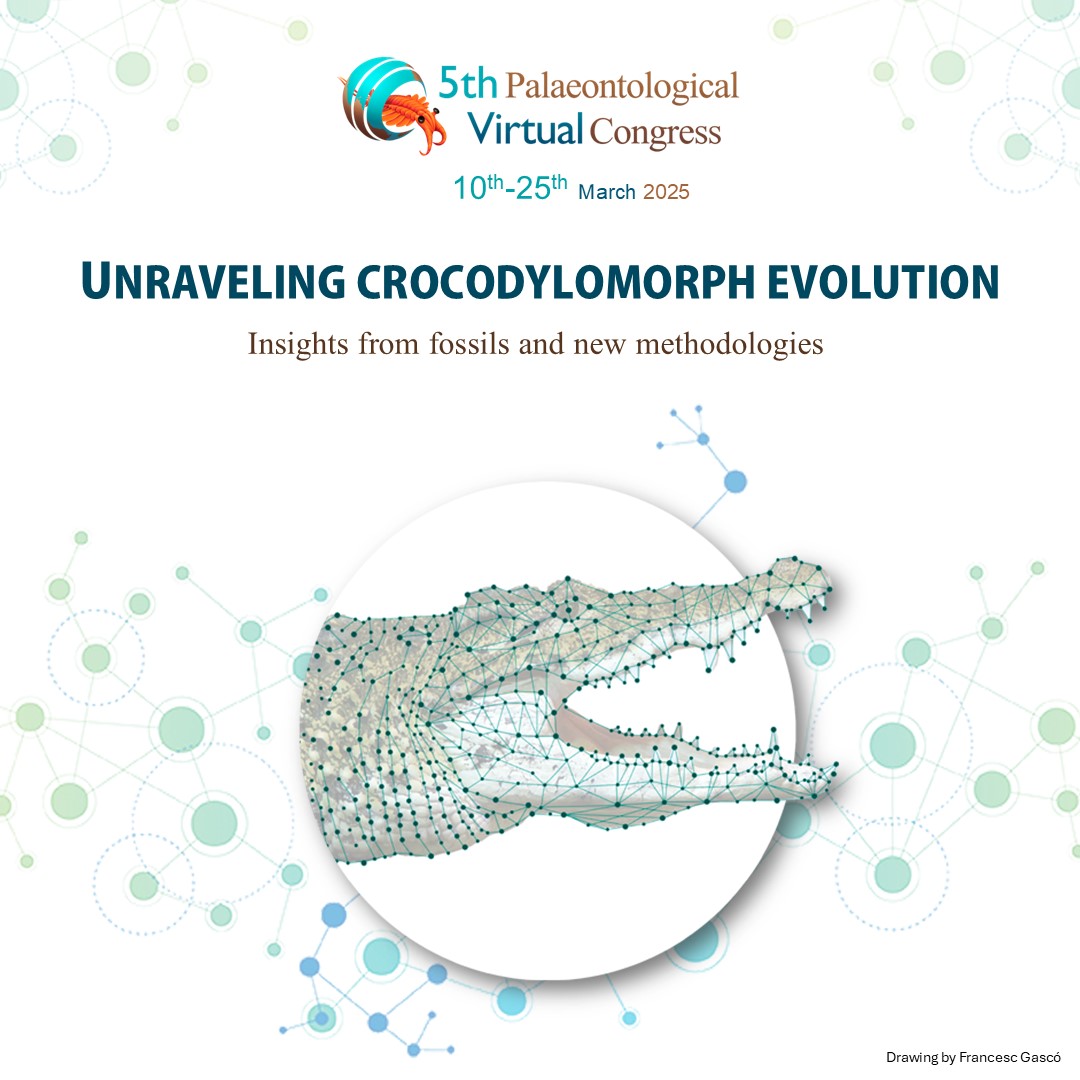UNRAVELING CROCODYLOMORPH EVOLUTION: INSIGHTS FROM FOSSILS AND NEW METHODOLOGIES

AUTHORS
Ane de Celis
Grupo de Biología Evolutiva, Universidad Nacional de Educación a Distancia, Madrid, Spain.
Institut Català de Paleontologia Miquel Crusafont, Universitat Autònoma de Barcelona, Barcelona, Spain.
ane.detecla@gmail.com
Iván Narváez
Grupo de Biología Evolutiva, Universidad Nacional de Educación a Distancia, Madrid, Spain.
inarvaez@ccia.uned.es
Alejandro Villanueva
Grupo de Biología Evolutiva, Universidad Nacional de Educación a Distancia, Madrid, Spain
alejandrovillanueva1ybi@gmail.com
Arturo Gamonal
Grupo de Biología Evolutiva, Universidad Nacional de Educación a Distancia, Madrid, Spain.
Museo Paleontológico de Alpuente, Valencia, Spain.
arturo-gamonal@hotmail.es
Abstract
Crocodylomorphs are a major archosaur lineage that originated in the Mesozoic Era and whose descendants are still present in modern ecosystems, with some species ranking among the largest reptiles in the world. Although only 26 recognised species of crocodylians roam the Earth today, this is in sharp contrast to the remarkable diversity of crocodylomorphs in the past. This thematic session aims to explore new research and findings in this group, focusing on their evolutionary history and diversity, which has been further elucidated by groundbreaking fossil discoveries and cutting-edge research methods in recent decades. The discovery of exceptional crocodylomorph fossil specimens around the world has provided new insights into their taxonomy, morphological evolution, and evolutionary transitions. Collaborative efforts by international research groups have deepened our understanding of their palaeobiology and ecological significance throughout their evolutionary history. Furthermore, the development of new analytical techniques, including advances in biomechanical studies, 3D imaging, isotopic analysis, geometric morphometrics, and phylogenetics, has allowed detailed reconstructions of their locomotion, feeding strategies, sensory capabilities, physiology, and even their global dispersal patterns.
This thematic session is an open invitation to share the latest findings in crocodylomorph research, improving our understanding of this group and their role in past ecosystems, while promoting interdisciplinary approaches and collaboration between researchers. Contributions spanning from systematic taxonomy to large-scale evolutionary research on crocodylomorphs are welcome in this session.
